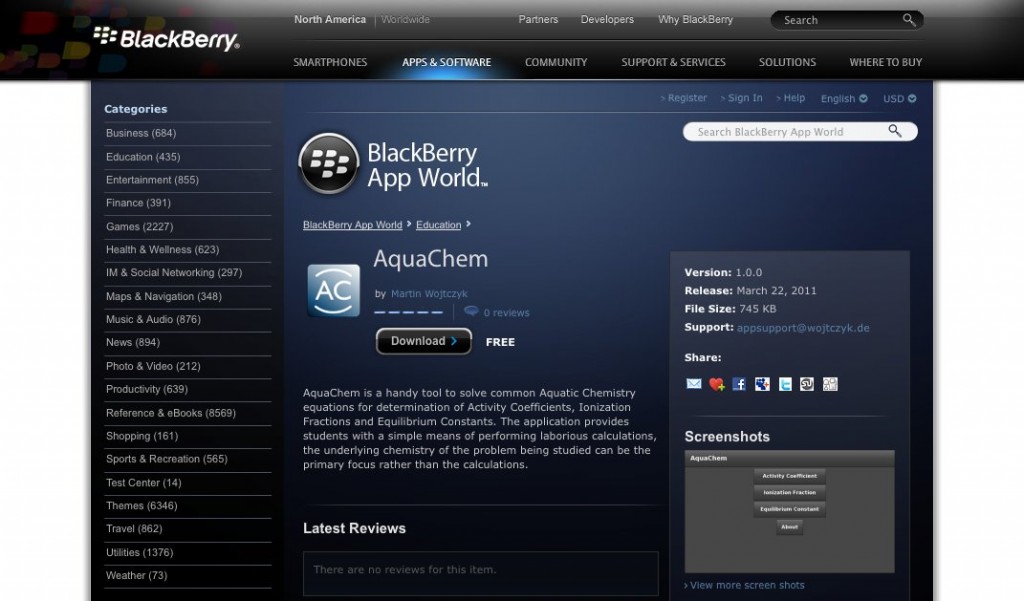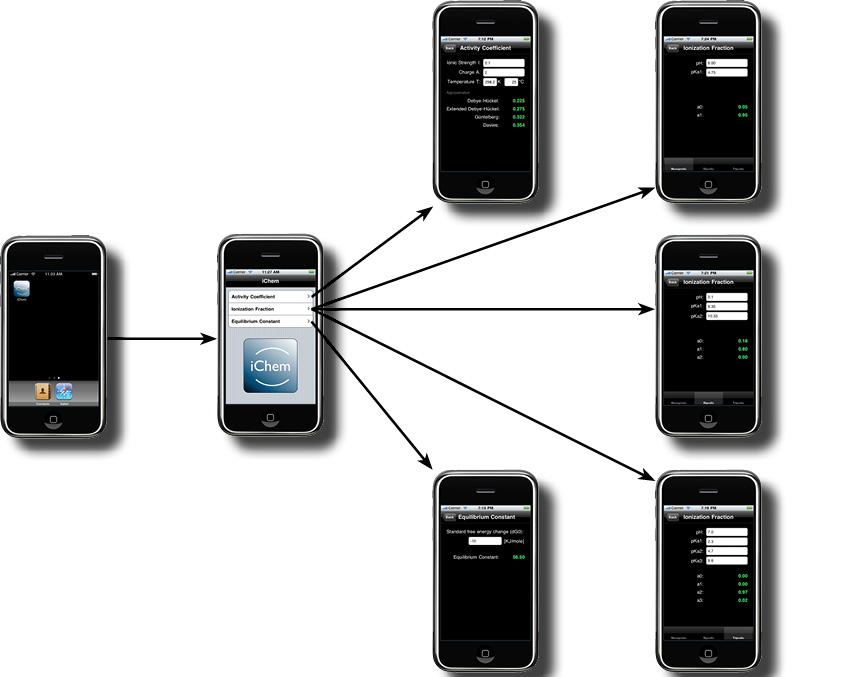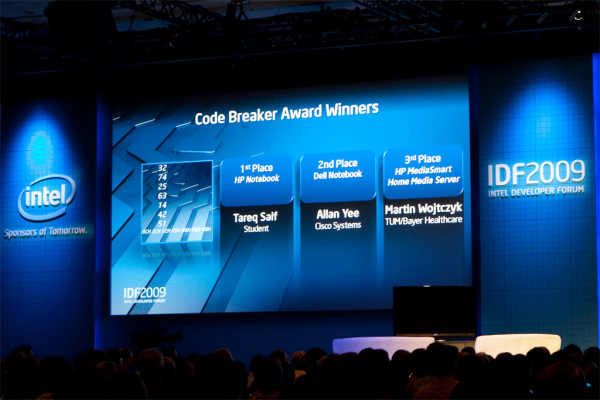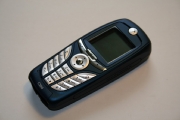AquaChem for the BlackBerry PlayBook
Research in Motion announced: everyone who submits an application for the BlackBerry PlayBook by March 15, would receive a free PlayBook tablet. Since I am very excited about the BlackBerry PlayBook, it’s Hardware, and it’s underlying QNX realtime operating system and I am waiting for it to appear on the market, a free Tablet is enough incentive to look into how to code for the PlayBook as an early adopter. I implemented AquaChem – an Adobe Air application – from scratch, after spending a couple of hours going through a comprehensive tutorial with Source Code.
Links:
AquaChem is based on the idea of iChem. The purpose of the application is to bring Aquatic Chemistry on modern Handheld devices to the classroom. AquaChem has just been submitted to the BlackBerry App World.
Creating Depth Images with the Kinect Sensor.
Microsoft’s Kinect Sensor is a nice peace of Hardware and considerably cheap for a camera that also provides a 640×480 depth image. Soon after it appeared on the market in November 2010, it was reverse engineered for users to interface it from the computer without the Xbox 360.
Technology Enthusiasts and Roboticists all over the world picked up a Kinect to see what they can do with it. My personal motivation is to improve Perception for my Service Robot. Shortly after the publication of the Kinect Hack, Microsoft and PrimeSense decided to release an official SDK: the OpenNI Framework.
- The OpenKinect Project – http://openkinect.org
- OpenNI – http://www.openni.org/
Below are the first Depth Images and User Tracking Images, that I took with the official SDK.
Stealing your Facebook made easy
Eric Butler published an easy to use Firefox extension which captures session cookies from broadcast media such as public wifi networks. It allows anyone, to collect Facebook, Twitter, Flickr, etc session cookies and do anything with these accounts with just a click.
http://codebutler.com/firesheep
This is scarily easy!
I hope social network providers start implementing end-to-end encryption via https soon. Until then, be careful from where you access your social networks. On the other hand easy identity stealing brings social networking to a new level. 😉
Intel Developer Forum 2010
This year’s Intel Developer Forum from September 13th to 15th was all about Data Center Applications, Cloud Computing, and Embedded Systems. I was happy about the opportunity to present a Poster about my Leonardo Robot Project in the academic track. The conference was accompanied by Intel’s AppUp Elements developer meeting which occurred for the first time this year.
iChem
iChem is a case study to bring aquatic chemistry calculations on the iPhone to the classroom. The computational nature of aquatic chemistry lends itself well to the iPhone platform and by providing students with a simple means of performing laborious calculations, the underlying chemistry of the problem being studied can be the primary focus rather than the calculations.
The application features Activity Coefficient, Ionization Fraction and Equilibrium Constant computations. The goal is to provide a user friendly tool for chemistry students, which enables them to quickly solve standard computations on their fingertips. The tool will be made available to the public, soon.
[1] Martin Wojtczyk, Mark A. Nanny, and Chetan T. Goudar. Aquatic Chemistry on the iPhone: Activity Coefficient, Ionization Fraction and Equilibrium Constant determination. In 239th American Chemical Society National Meeting & Exposition, San Francisco, USA, March 2010.
WiiDrive
The Wii Remote got plenty of attention among Roboticists to improve Human-Robot-Interfaces and to lower anxiety for complex machines. Therefore I implemented WiiDrive for the Leonardo Robot Project. WiiDrive is a Wii Mote Control application to enable anybody to move the Leonardo Robot, without typing complex commands at the keyboard (see Video).
Mac OS X Snow Leopard Server Tour, San Jose
The official product link of Mac OS X Server: http://www.apple.com/server/
My favourite presentation during this event was “Sal on Automation” with system wide services. His website contains very valuable resources on automation Tasks with Mac OS X. Check out:
http://www.macosxautomation.com and
http://www.macosxautomation.com/services/index.html
Winner of the Intel Code Breaker Challenge
Today, I was very happy to receive the 3rd prize for the Intel Code Breaker Challenge at IDF 2009. Thanks Intel, it was fun!
New York City
San Francisco
Sync your Motorola C390 with iSync for free
Recently my SonyEricsson cellphone broke and I wanted to replace it by my Bluetooth enabled Motorola C390. Apple’s iSync is really great to keep your address book and calendar in sync with your cellphone. Unfortunately the C390 is not supported by default. Your Mac can pair with the phone and use it for data connections but iSync does not support it, see [1].
There seem to be some commercial solutions which may help, though I didn’t test one of them, just search the web for iSync and C390 and you will find them.
Luckily I also found this guy’s Howto in a forum about adding Motorola C390 support to iSync for free just by modifying a xml file [2]. However, since I am running Mac OS X 10.4.9, I recognized slight changes in the xml tag names. That’s why I noted the instructions below.
Enabling Motorola C390 for iSync
- Right click on the iSync Application
- Show Package Contents
- Goto Contents/Plugins/ApplePhoneConduit.syncdevice/Contents/ Plugins/PhoneModelsSync.phoneplugin/Contents/ Resources
- Backup and modify the MetaClasses.plist file to make it look like below in the beginning
<?xml version="1.0" encoding="UTF-8"?> <!DOCTYPE plist PUBLIC "-//Apple Computer//DTD PLIST 1.0//EN" "http://www.apple.com/DTDs/PropertyList-1.0.dtd"> <plist version="1.0"> <dict> <key>com.motorola.C390</key> <dict> <key>Identification</key> <dict> <key>com.apple.gmi+gmm</key> <string>"Motorola CE, Copyright 2000"+C390</string> </dict> <key>InheritsFrom</key> <array> <string>com.motorola.usb-bt.0x22B8/0x4902</string> </array> <key>Services</key> <array> <dict> <key>ServiceName</key> <string>com.apple.model</string> <key>ServiceProperties</key> <dict> <key>ModelIcon</key> <string>MOTC390.tiff</string> <key>ModelName</key> <string>C390</string> </dict> </dict> </array> </dict> </dict>
- You will need a tiff file, with the name you entered under ModelIcon, but you can just copy it from another one in the same folder as the MetaClasses.plist file
- Start iSync
- Select Devices->Add Device from the menu
- et voilà, your Motorola C390 should show up as a supported phone
I synced my address book and calendar successfully with it, so I don’t know, why the phone is not supported by default. Anyways, use at your own risk.
Wiimote controls Front Row on a PowerBook
I have this 2005 12″ PowerBook G4 with Mac OS X Tiger 10.4.9 and was jealous of the new MacBooks’ Remote Controls. One day I found a movie on youtube about someone controlling Front Row with a Wiimote. I just didn’t find all the links in one place. Maybe this is of help for you. It should work on other Bluetooth enabled Macintosh computers as well.
1. Get Front Row to work on a Mac without Remote Control
- Download the Front Row application from Apple
- Enable Front Row on your Mac through Andrew Escobars Enabler
2. Install DarwiinRemote
- Get DarwiinRemote
- The key mapping matches the one of Front Row by default, though, you might want to change the Wiimote’s + and – buttons to change volume control as well
Works like a charme.
You can also use the Wiimote with DarwiinRemote to go through your PowerPoint Presentations 🙂















































